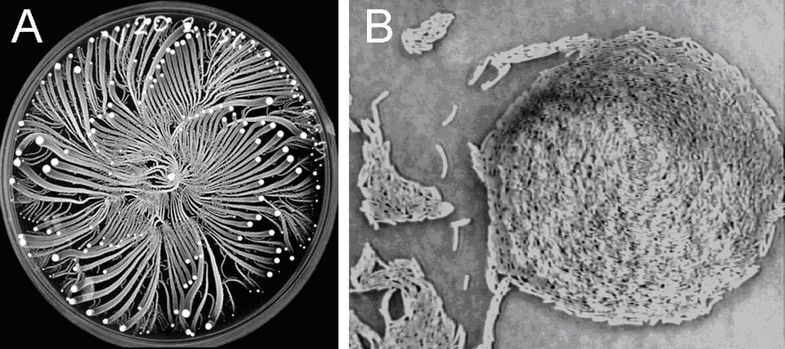[Referencias] Paenibacillus Vortex

The paper describes how bacteria develop complex colonial patterns by utilizing intricate communication capabilities, such as quorum sensing, chemotactic signaling and exchange of genetic information (plasmids). Bacteria do not store genetically all the information required for generating the patterns for all possible environments. Instead, additional information is cooperatively generated as required for the colonial organization to proceed. Each bacterium is, by itself, a biotic autonomous system with its own internal cellular informatics capabilities (storage, processing and assessments of information).
Social behavior of bacteria, from physics to complex organizationSwarm and complex pattern formation in Paenibacillus vortex studied by imaging and tracking cells
